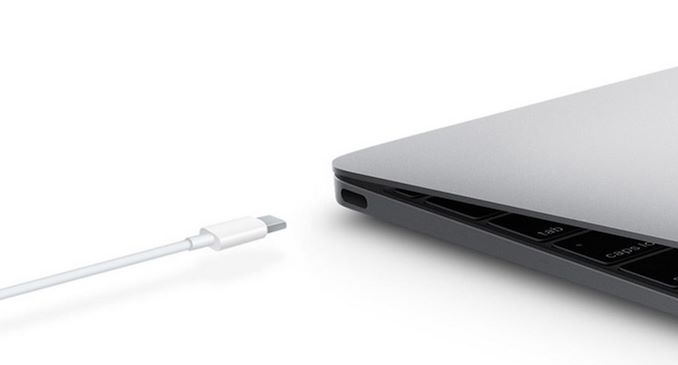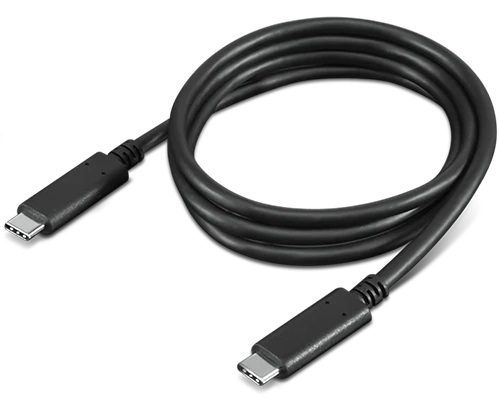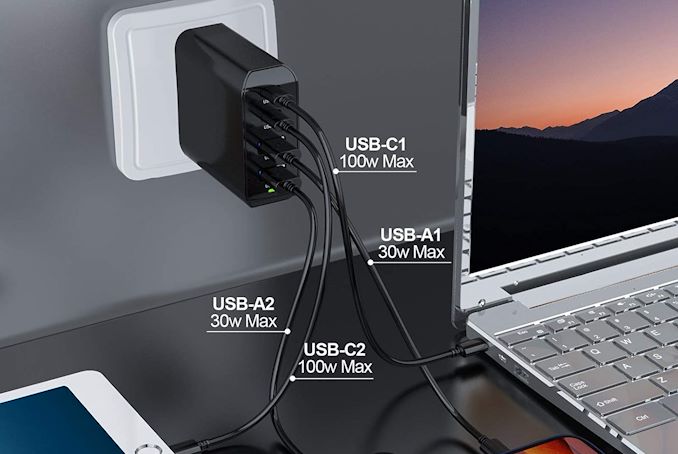USB-C Power Delivery Hits 240W with Extended Power Range
by Ganesh T S on May 28, 2021 8:00 AM EST- Posted in
- USB
- USB PD
- USB-IF
- USB4
- Power Delivery

The USB-IF released a couple of new specifications recently - R2.1 for Type-C and R3.1 for USB-PD. The main update is the 'Extended Power Range' aspect that allows for delivery of up to 240W over Type-C setups supporting the relevant USB-PD profile.
The first USB Power Delivery (USB-PD) specification was released in 2012, and it has seen regular updates over the years. Initially, the focus was on enabling faster charging rates for smartphones and other such devices (which had been using proprietary charging schemes or the USB-BC battery charging specifications). After the release of the Type-C specifications in 2014, USB-PD became a hot topic again. In addition to charging, the attractiveness of a single port for both data and power I/O - particularly from the viewpoint of compact and slim notebooks - brought in the need to shore up the amount of power transferred between a source and a sink. Prior to the release of USB-PD R3.1, certifications from the USB-IF were in place for equipment capable of sourcing / sinking up to 100W (slightly lesser in practical circumstances). The newly released specifications refer to the modes in R3.0 as 'Standard Power Range' (SPR).
USB-PD R3.1 supports three charging models:
- Fixed voltage
- Programmable power supply (PPS), and
- Adjustable voltage supply (AVS).
In the fixed voltage scheme, the Standard Power Range (SPR) mode supports 3A and 5A at 5V, 9V, 15V, and 20V. The 3A configuration supports between 15 and 60W. The 5A scheme requires a specific type of cable and can supply up to 100W. The new Extended Power Range (EPR) mode supports all voltage and current combinations of SPR, and also includes 5A supply at 28V, 36V, and 48V, allowing for support up to 240W.
In the programmable power supply (PPS) scheme available in SPR mode, currents are limited by the source and the cable's advertised capabilities. While the programmed voltage ranges track the ones in the fixed voltage scheme, the actual voltage may vary between 3.3V and 5.9V (for the 5V setting), 11V (for the 9V setting), 16V (for the 15V setting), and 21V (for the 20V setting) in steps of 20mV.
In the EPR mode, the AVS model allows for the voltage to be adjusted between 15V and one of 28V, 36V, or 48V in steps of 100mV depending on the negotiated EPR contract. The source and sink need to enter this specific EPR mode and the cable between them also needs to support EPR for these new voltages to be enabled.
EPR specifications keep safety in mind by allowing sources to scale back to 5V with a hard reset in case of unresponsive downstream sinks. The sink is also required to keep up periodic communication with 'keep-alive' messages to the source in this mode.
Cables supporting EPR need a compulsory electronic marking indicating EPR compatibility using 'EPR Mode Capable' bit set. Standard Power Range cables (SPR) support only up to 100W PD. Receptacles and cables supporting EPR need extra mechanical considerations to prevent shorting / arcing during the connection process. Towards this, the mechanical specifications of the cables as well as receptacles are getting updates. Arcing is possible during unplug operations, and this is being mitigated by length differences between the CC and VBUS pins (allowing the detection of disconnect events early enough to get the source to reduce the current prior to the full disconnection). A snubber capacitor at either cable end is recommended to help with this feature.
EPR enables supply of up to 5A at 48V, but the cables themselves need to support up to 53.65V, and the capacitors used need to be rated for 63V. The electronic marking on the cables are supposed to specify 50V/5A with visible EPR identification icons for end users.
Thumb drives sinking more than 3A or supporting USB4 operations are now mandated to respond to 'cable identity' queries from the host. Additional constraints / parametric adjustments have been made for cables to be fit for USB4 operations. The certification requirements for USB4 active cables have also been updated. They are now required to support Thunderbolt 3 capabilities fully (including Alternate Modes). Since these certification requirements are new, and do not specify updates for passive cables, it is possible that USB4 passive cables that support full capabilities when used with modern USB4 hosts may not operate at full speeds with legacy Thunderbolt 3 platforms.
USB-PD has enabled the use of a single Type-C port for both data and power I/O. In its previous avatar, this worked well for mobile devices such as smartphones and tablets - allowing them to even double up as power banks. In parallel, advances in Gallium Nitride (GaN) semiconductors have enabled the creation of very efficient and compact power electronics equipment.
Combined with the new USB-PD specifications allowing for up to 240W of power delivery, we will soon see USB-C chargers / adapters capable of powering desktop PCs (such as the Intel NUCs - even the gaming-focused models) and All-in-Ones. Currently, these systems still use wall-warts with DC-in barrel jacks to power the internal components. With solutions in sight for this inconvenience, such powerful systems are bound to see new applications.
Source: USB-IF












54 Comments
View All Comments
meacupla - Friday, May 28, 2021 - link
I own a 100W rated USB-C cables from cablematters and a 90W rated USB-C GaN charger from Ravpower.I like the 90W GaN charger, but it's not as small as the 60W GaN charger from the same company.
I like the sturdy construction of the 100W rated USB-C cable, but it's not as flexible as a 60W rated cable.
Some devices don't like it when you use a USB-C charger that doesn't provide enough power.
What am I getting at?
Do we really need 240W PD?
A 240W charger is going to be massive, even with GaN tech.
A 240W rated cable is, very likely, going to be quite stiff, if it is going to meet safety standards.
And then there are going to be consumers that will get confused when the charger/cable they bought doesn't work with their 240W consumption device, despite it being plug compatible.
because, you know, reading is hard.
SydneyBlue120d - Friday, May 28, 2021 - link
Check the Einova products ;-)meacupla - Friday, May 28, 2021 - link
Einova's 65W charger is basically the same size as ravpower's 61W charger?Take whichever and times its volumetric size by 4. That's going to be your "small" 240W GaN tech charger
Arsenica - Friday, May 28, 2021 - link
The efficiency gained by using GaN transistors in <20V power supplies has been of only a few percentage points and the difference is usually negligible comparing a MOSFET to a GaN USB-PD supply at <12V.However these new higher voltage and current USB-PD modes will increasingly show the advantages of GaN transistors.
Skeptical123 - Sunday, May 30, 2021 - link
If I'm not mistaken the benefit of using GaN transistors for stuff like Type-C power supplies is that they can operate at a higher temp. The limiting factor on contempered charges that are made to be small dumping enough heat into the case to keeping the silicon based components below 125C. GaN can go a lot hotter. Also any efficacy gains of course help keep thermals down but even if it was not there still would be benefit using GaN.Dolda2000 - Friday, May 28, 2021 - link
>Do we really need 240W PD?I think the move to USB-C as a standard for power delivery is pretty nice. I've been especially enjoying not being bound to the OEM charger that used to ship with laptops, and actually being able to buy standardized chargers from third parties, so that I can have several of them without them becoming useless when I switch laptops.
The modularity of USB-C with all the resulting range of capabilities isn't a strictly good thing, for sure, but it's also not a problem for me personally, and I don't really think it's my business to worry about problems that I don't have. Meanwhile, there are a ton of laptops that need more than 65 W, and being able to extend USB-C power delivery to them too sounds really nice.
240 W in that small connector is pretty crazy, and I'm quite impressed that they're even able to pull it off.
dotjaz - Friday, May 28, 2021 - link
He/she/they have completely missed the point. 240W charger is ALREADY ubiquitous for gaming laptop. Anything said about wattage and cable (which is just about everything) is complete moot and irrelevant because the alternative WE ALREADY HAVE is worse. Not doing 240W would be stupid.The only genuine concern is the CONNECTOR during unplug events. The cable isn't any getting any thicker at all being rated at 5A still.
And unsurprisingly wasn't even mentioned by OP, because lack of understanding how electricity works I assume.
>240 W in that small connector is pretty crazy, and I'm quite impressed that they're even able to pull it off.
Well, since effectively all they did was extending PPS to 48V, the only hard part was getting the connector unplug mechanism right, which isn't to say is easy, but it's really not surprising.
Samus - Monday, May 31, 2021 - link
If we want to enable portable workstations with decent GPU's powering 4 monitors through a USB-C dock running off the host, then yes we need 240w.Daviii - Friday, May 28, 2021 - link
240W chargers will be detached from the wall just like every "thick laptop" charger out there, but those laptops will be eventually compatible with USB-C docks like the "thin" ones.dotjaz - Friday, May 28, 2021 - link
>What am I getting at?Nowhere.
>Do we really need 240W PD?
Yes we do
>A 240W charger is going to be massive, even with GaN tech.
So the current 100W+ charger with a different connector isn't? My laptop uses 19.5V11.8A charger. What do you suppose the size would be without USB PD?
>A 240W rated cable is, very likely, going to be quite stiff, if it is going to meet safety standards.
And again, what do you expect current charger to use? Wireless? My laptop uses 11.8A rated cable, how is that any better than 5A cable rated for 48V - which requires only 0.7x the cable girth because only current matters to the cable, high voltage only affect the connectors during unplug event, not even plugin.